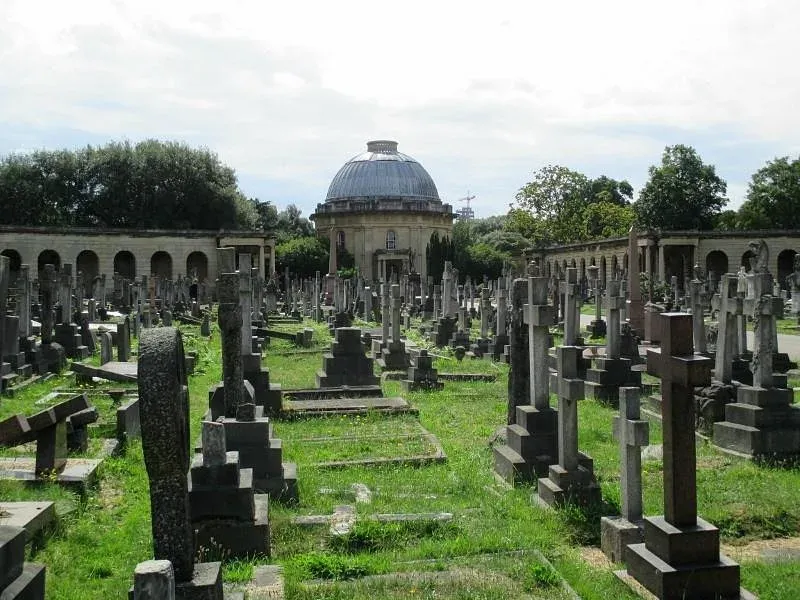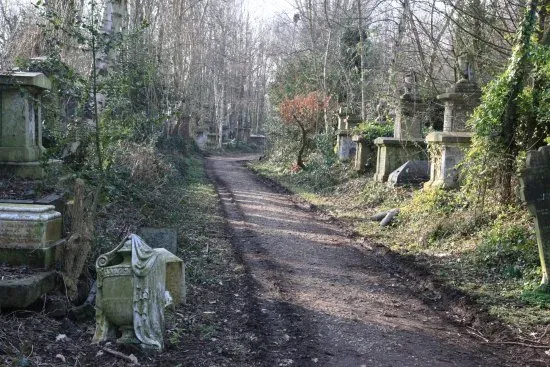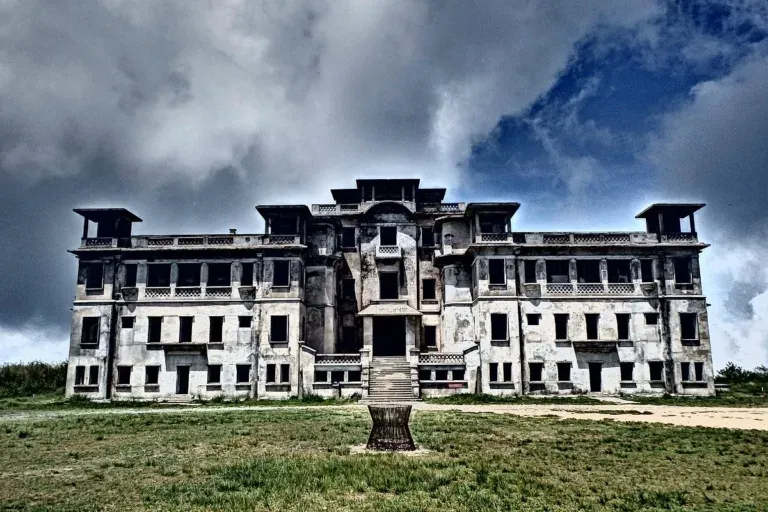Brompton Cemetery
Brompton Cemetery: A Victorian Treasure of History and Architecture in London
Brompton Cemetery is one of the seven Victorian cemeteries, collectively known as the “Magnificent 7,” built in the 19th century to meet the growing demand for burial spaces in London. Located in the borough of Kensington and Chelsea, Brompton Cemetery is an extraordinary blend of architectural beauty, rich history, and a serene environment, making it one of the most fascinating and visited cemeteries in the British capital. This article explores the history, architecture, notable historical figures buried there, and the cultural role of Brompton Cemetery in depth.
History and Foundation of Brompton Cemetery
 Brompton Cemetery was founded in 1839 and opened in 1840 as one of the “Magnificent Seven,” cemeteries built to address the health crisis and overcrowding of London’s churchyards. These cemeteries were constructed outside the city center to resolve the issue of unsanitary conditions in central church cemeteries, which were becoming overcrowded and unhealthy.
Brompton Cemetery was founded in 1839 and opened in 1840 as one of the “Magnificent Seven,” cemeteries built to address the health crisis and overcrowding of London’s churchyards. These cemeteries were constructed outside the city center to resolve the issue of unsanitary conditions in central church cemeteries, which were becoming overcrowded and unhealthy.
Designed by architect Benjamin Baud, Brompton Cemetery is inspired by the monumental Père Lachaise Cemetery in Paris and spans 16.5 hectares of land. It was funded by the West of London and Westminster Cemetery Company and, at the time of its opening, was one of the largest and most expensive cemeteries in the city.
In 1852, Brompton Cemetery was purchased by the British government and transformed into a royal cemetery. This transfer of ownership granted the cemetery greater prestige and contributed to its historical significance as a burial site for many illustrious figures in British society.
Architecture and Design of the Cemetery
Brompton Cemetery is renowned for its extraordinary architecture and design inspired by monumental European cemeteries. Architect Benjamin Baud designed the cemetery as a vast landscaped garden, with tree-lined avenues, statues, and mausoleums reflecting the romantic aesthetic and garden-cemetery philosophy of the 19th century.
The Great Circle and the Chapel
One of the most distinctive architectural features of Brompton Cemetery is the Great Circle, a straight avenue that runs through the cemetery and leads to the chapel. This avenue is flanked by colonnades that give the cemetery a sense of grandeur and monumentality. The colonnades are adorned with sculptures and inscriptions commemorating the deceased, adding an additional layer of symbolic meaning.
At the center of the cemetery is the chapel, designed in the neoclassical style and inspired by the Temple of Vesta in Rome. The chapel serves as the focal point of the cemetery and is a refined example of Victorian funerary architecture. Its dome and Corinthian columns represent an interpretation of Roman classicism that was highly popular at the time.
The Mausoleums and Sculptures
 The cemetery houses a wide range of mausoleums and monumental tombs, many of which were designed by prominent Victorian architects and sculptors. The mausoleums vary in style, from neo-Gothic to neoclassical, and often feature intricate and symbolic details.
The cemetery houses a wide range of mausoleums and monumental tombs, many of which were designed by prominent Victorian architects and sculptors. The mausoleums vary in style, from neo-Gothic to neoclassical, and often feature intricate and symbolic details.
The sculptures adorning the graves at Brompton Cemetery are particularly notable. Angels, allegorical figures, and Christian symbols are common and represent the religious beliefs and values of Victorian society. Many of the graves and monuments are works of art in their own right, reflecting the craftsmanship and attention to detail that characterized the era.
Famous Figures Buried at Brompton Cemetery
Brompton Cemetery is the final resting place of many important historical and cultural figures, making it a site of great interest to scholars and visitors alike. Among the notable individuals buried in the cemetery are:
- Emmeline Pankhurst (1858-1928): One of the most important figures in the British suffragette movement, Emmeline Pankhurst is known for her role in the struggle for women’s right to vote. Her grave, located in a prominent position, is a pilgrimage site for anyone interested in the history of women’s rights.
- John Snow (1813-1858): A pioneer of epidemiology, John Snow is famous for identifying the source of a cholera outbreak in London in 1854, demonstrating that contaminated water was the vector of the disease. His discovery has had a lasting impact on public health and disease prevention.
- Henry Cole (1808-1882): An innovator in the fields of arts and education, Henry Cole was one of the founders of the Victoria and Albert Museum and a promoter of the Great Exhibitions. His grave is a monument to a life dedicated to cultural progress and public education.
- Samuel Cunard (1787-1865): Founder of the Cunard Line, one of the most famous transatlantic shipping companies, Samuel Cunard played a crucial role in the development of maritime transport and the connection between Europe and North America.
The Role of Brompton Cemetery in Culture and Society
 In addition to being a burial site, Brompton Cemetery has played an important role in London’s cultural and social life. The cemetery has often been used as a location for films and television shows due to its unique atmosphere and stunning architectural landscape. Additionally, the cemetery is an important biodiversity site, hosting a variety of plants and animals, and contributes to the conservation of urban wildlife.
In addition to being a burial site, Brompton Cemetery has played an important role in London’s cultural and social life. The cemetery has often been used as a location for films and television shows due to its unique atmosphere and stunning architectural landscape. Additionally, the cemetery is an important biodiversity site, hosting a variety of plants and animals, and contributes to the conservation of urban wildlife.
Brompton Cemetery is also a place of reflection and commemoration, where people can come to pay respects to their loved ones or simply enjoy the tranquility and beauty of the landscape. In recent years, the cemetery has seen an increase in tourist visits, with guided tours offering visitors the opportunity to discover the history and personal stories of those buried there.
Conservation and Restoration
In recent decades, Brompton Cemetery has benefited from numerous conservation and restoration projects aimed at preserving its architectural and natural heritage. In 2014, the cemetery received significant funding from the Heritage Lottery Fund for a restoration project that included the chapel’s restoration, the renovation of pathways, and the conservation of the oldest sculptures and graves.
These conservation efforts are essential to ensure that Brompton Cemetery continues to be a place of memory, history, and beauty for future generations. The cemetery is now protected as a site of historical and cultural interest, recognizing its importance not only as a burial place but also as an integral part of London’s heritage.
The Future of Brompton Cemetery
Looking to the future, Brompton Cemetery will continue to be a place of historical, cultural, and natural importance. With growing awareness of the importance of preserving historic cemeteries, Brompton Cemetery is expected to continue receiving the attention needed to maintain its splendor and relevance.
The cemetery remains a place of great interest for historians, genealogists, architects, and cultural history enthusiasts, as well as for those seeking a peaceful retreat from the hustle and bustle of urban life. Its combination of history, architecture, and nature makes it a unique treasure in the British capital.
Conclusion
Brompton Cemetery is not just a burial place but a living monument to London’s history and the lives of those who helped shape the city. With its extraordinary architecture, historic graves, and serene landscape, the cemetery is a place of beauty and reflection where the past and present meet. Through ongoing conservation and restoration efforts, Brompton Cemetery will continue to be a cultural and historical landmark, a place where the memory of the departed is honored, and history is preserved for future generations.
 Subscribe to our YouTube channel
Subscribe to our YouTube channel





